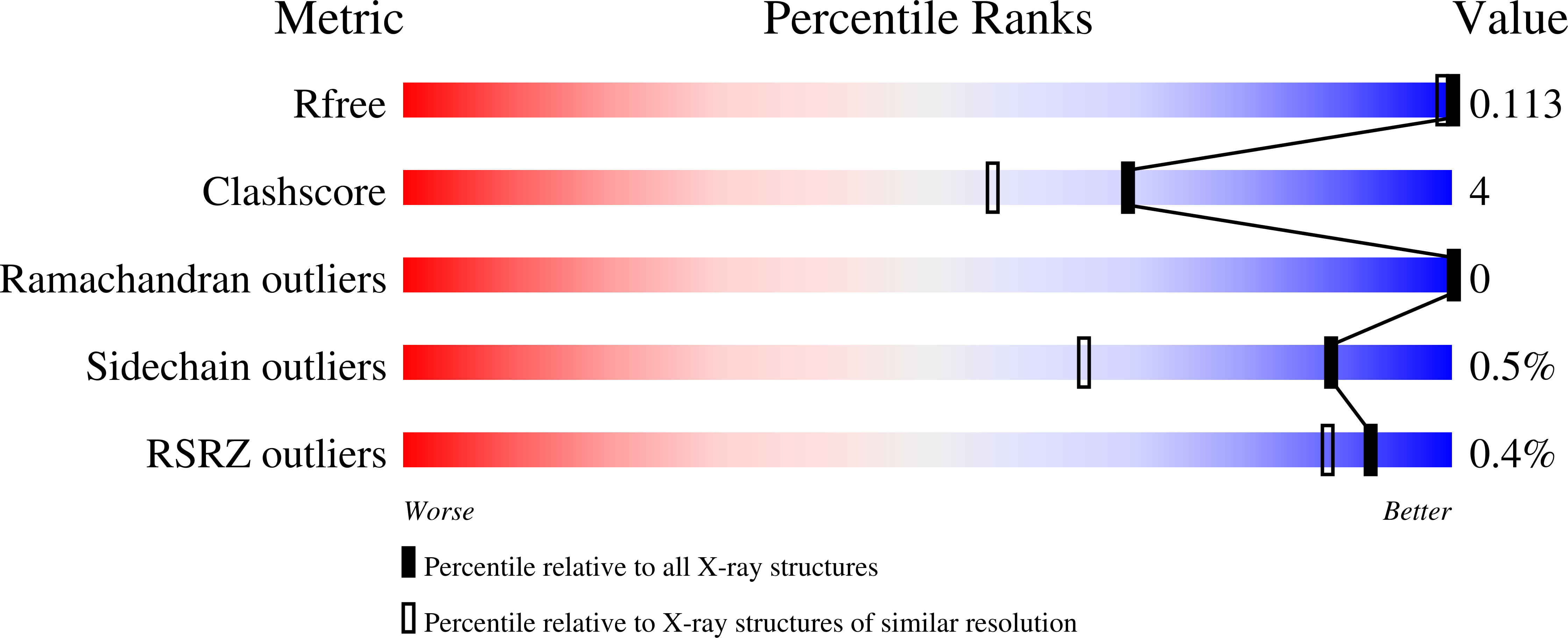Atomic resolution studies of S1 nuclease complexes reveal details of RNA interaction with the enzyme despite multiple lattice-translocation defects.
Adamkova, K., Koval', T., Ostergaard, L.H., Duskova, J., Maly, M., Svecova, L., Skalova, T., Kolenko, P., Dohnalek, J.(2022) Acta Crystallogr D Struct Biol 78: 1194-1209
- PubMed: 36189740
- DOI: https://doi.org/10.1107/S2059798322008397
- Primary Citation of Related Structures:
7QTA, 7QTB - PubMed Abstract:
S1 nuclease from Aspergillus oryzae is a single-strand-specific nuclease from the S1/P1 family that is utilized in biochemistry and biotechnology. S1 nuclease is active on both RNA and DNA but with differing catalytic efficiencies. This study clarifies its catalytic properties using a thorough comparison of differences in the binding of RNA and DNA in the active site of S1 nuclease based on X-ray structures, including two newly solved complexes of S1 nuclease with the products of RNA cleavage at atomic resolution. Conclusions derived from this comparison are valid for the whole S1/P1 nuclease family. For proper model building and refinement, multiple lattice-translocation defects present in the measured diffraction data needed to be solved. Two different approaches were tested and compared. Correction of the measured intensities proved to be superior to the use of the dislocation model of asymmetric units with partial occupancy of individual chains. As the crystals suffered from multiple lattice translocations, equations for their correction were derived de novo. The presented approach to the correction of multiple lattice-translocation defects may help to solve similar problems in the field of protein X-ray crystallography.
Organizational Affiliation:
Institute of Biotechnology, Czech Academy of Sciences, v.v.i., Průmyslová 595, 252 50 Vestec, Czech Republic.




















